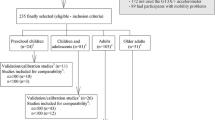Abstract.
Using the surrogate data technique we evaluated whether, during running, the synchronization between cardiac and locomotor rhythms resulted from entrainment or by chance. An electrocardiogram and an electromyogram from the right vastus lateralis muscle were monitored from ten healthy young men running at a paced rhythm of 150 steps a minute. The relationship between cardiac and locomotor rhythms was determined by examination of the occurrence of the heart beat with respect to the locomotor phase. The examination revealed that synchronization patterns were observed in all subjects. We generated surrogate data by sorting randomly the original locomotor rhythm, and no synchronization patterns were then seen. This may indicate that the synchronization between the cardiac and locomotor rhythms represented entrainment. We have provided the first evidence for the rejection of the hypothesis that when heart beat rhythm is close to the locomotor rhythm, synchronization between the two rhythms occurs by chance.
Similar content being viewed by others
Author information
Authors and Affiliations
Additional information
Electronic Publication
Rights and permissions
About this article
Cite this article
Nomura, K., Takei, Y. & Yanagida, Y. Analysing entrainment of cardiac and locomotor rhythms in humans using the surrogate data technique. Eur J Appl Physiol 84, 373–378 (2001). https://doi.org/10.1007/s004210100382
Accepted:
Issue Date:
DOI: https://doi.org/10.1007/s004210100382




